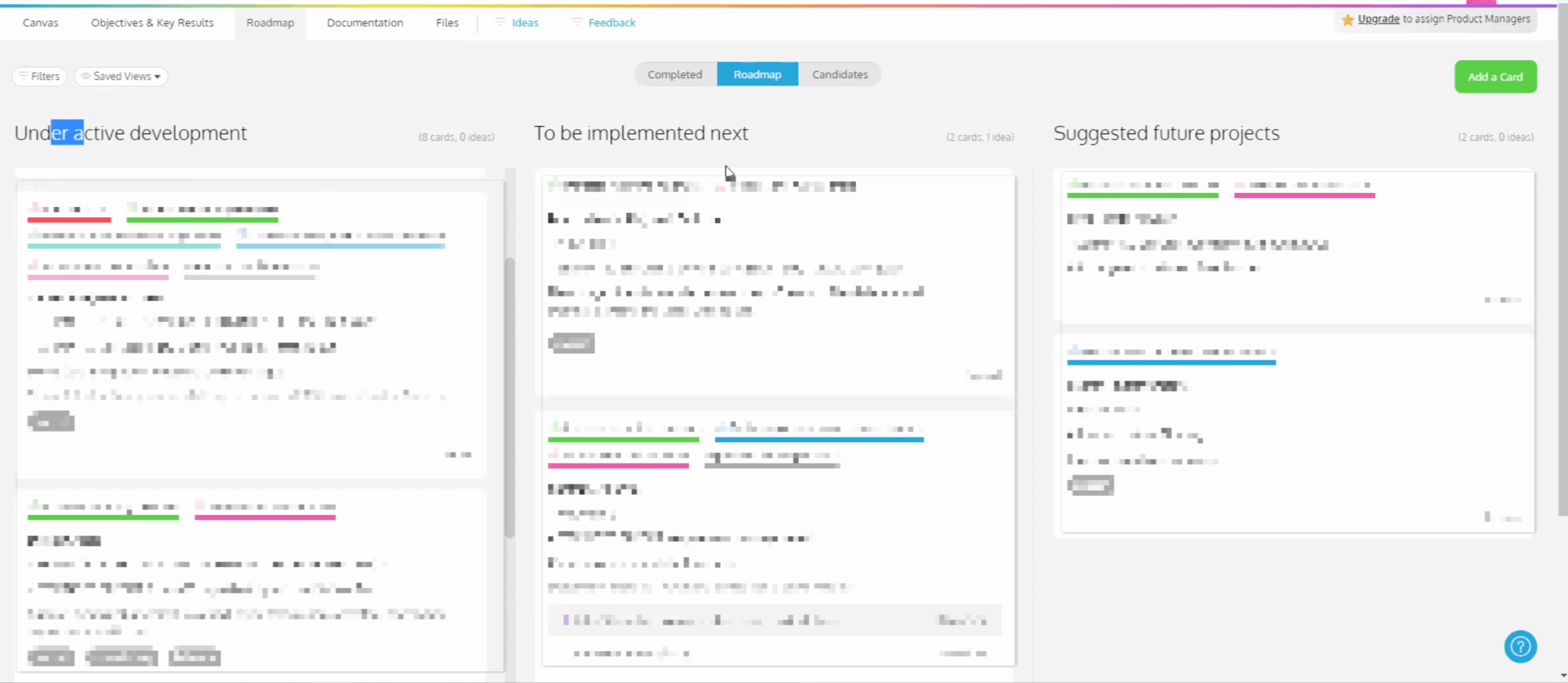How Do I Show Time on a Lean Roadmap?
I think the world now generally agrees that timeline roadmaps aren’t a great idea. The very format of the roadmap, with having a timeline at the top that always marches forward, forces you to assign dates to everything that sits underneath that line. Never have I ever met a product team who actually consistently delivered on their previous estimations of whatever they put on a timeline roadmap, and even trying to stick to a timeline plan leads teams down a vicious cycle that leads to blame culture and a sluggish pace of change.
So out with the timeline roadmap, and in with something leaner… but how do we show and think about time on these Now-Next-Later roadmaps? When is Later? Why not just show four quarters?
I spend a lot of time on roadmap clinics coaching people through questions like these, so I’ll share my advice here:
The Now, Next, and Later time horizons that we use on ProdPad roadmaps today grew out of an original idea shared by our co-founder Simon Cast when we first devised the lean roadmap format, though back then, we went with the slightly less catchy column names of Current, Near Term, Future.
A time horizon can be imagined as if you have landed on a new shore and can see your goal in the distance. Now is what you can see in front of you. Crystal clear, and has plenty of context. Next things are further in the distance and in various directions. How well you can see these depend on how high up you’re standing and what sort of tools you’ve got. If you’re a new team with few resources, Next is probably not that far away. If you’ve been on the trail a while and have a lot of eyes and ears on the team, and are well-tooled up, you can see further out. Later is off on the horizon. Again, how far you can see depends on your team’s context, but it’s almost certainly hazy. You can see there are problems or opportunities ahead, but there’s no way you can see them close enough to break them down and start figuring them out. And that’s okay! You don’t need to yet. You need to figure out a path that makes sense given your resources and goals through the Now and Next first.
In ProdPad, these columns can be renamed, so the person I was chatting to on our roadmap clinic yesterday went with Under active development, To be implemented next, and Suggested future projects, which communicates the essence of time horizons just fine:

Quarters are sometimes used as titles when you’re weaning your team off the idea of the timeline roadmap and onto a lean format. It’s more palatable but does come with its own set of problems. Fitting with the 3 column time horizon layout offered by ProdPad, we’ll often encounter variations of Q1, Q2, Q3-4… but it begs the question:
Why is one year the perfect horizon for your product vision? If you’re a larger company with a more mature product, 12 months is almost certainly too shortsighted, and you’re arbitrarily lopping off strategic thinking beyond that point. If you’re a smaller, newer outfit, chances are, Later is weeks or months away, and you’re doing yourself a disservice to try to plan your steps a year from now.
That’s the beauty of the time horizon method. They adjust as your company matures and is able to take in more of its surroundings.
If you’re going to go down this route, build a little flexibility into your last column, eg Q1, Q2, Q4++ (which essentially means… Later!)
After all, You don’t know how big your team is going to be by Q4 next year, let alone how fast you’ll be able to deliver.
What about you? What do you have at the top of your roadmap? Is it a continuous line, time horizon buckets with names like the above, or something more unique? Or something different altogether? Share in the comments below.

